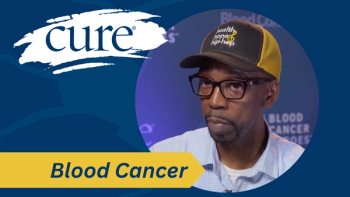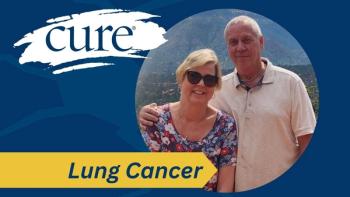
Bone Marrow Transplants: After the Hospital
A guide for allogeneic transplant patients after the hospital.
For any patient, release from the hospital is a big day. For transplant patients, particularly those undergoing allogeneic (donor) procedures, there is a lot of healing and follow-up procedures left to do. My post
At release, you’ll hopefully be through with major issues and side effects. However, there will usually be some lingering symptom outside the “normal” transplant process to deal with. In my case, it was the need for a week on near-continuous antibiotic I.V. to be managed. After my last (autologous) transplant I had to have surgery to repair veins in my arm after a bad reaction to a PICC (peripherally inserted central catheter) line. Besides wound care, I also had to have I.V. antibiotics. In both cases, the hospital arranged with an infusion company to have a visiting nurse bring supplies and train us in administering and caring for intravenous lines.
Note: The following is based on the experience of me and my fellow patients. Depending on protocols at your transplant center, and those of your doctor, things may be different. My intent here is to allow you to ask intelligent questions about upcoming events.
Once you’re established in nearby outpatient housing (apartment, hotel, or facility like
As the weeks go by, you will need less lab work, dropping to two or three times a week, but your central line still requires almost daily care. At around 30 days after transplant (very roughly 10-15 days after hospital release), you will have a bone marrow biopsy. This has two purposes. First, to see what percentage of your marrow is your donors, and how much is your residual. They like for this number to be in the 90 percent-plus range to consist of your donors. It’s desirable by this time for all your original marrow to be gone. With the chemo many of us get, it’s hard to imagine any old marrow at all surviving! They also are looking to make sure there is no cancer remaining. At this time, depending out how you are doing, they may also take out your central line. This frees you from daily clinic visits, but means your labs have to come out of your port or arms from now on, which, to me, was a trade-off well worth making.
Each week, you should feel better. Appetite will return, and you’ll be encouraged to shift from “just eat anything that you can stomach” to a high-protein, high-electrolyte diet. Your energy level will gradually increase. I measured mine by how far I could go on our daily walks. At first, a stroll was enough. Then I worked up to a mile, then more. Now, at +60, I’m up to 2 1/4 miles a day. You’ll sleep a lot, many of us sleeping 12 hours at night and having 2-3 naps a day at first. Again, at +60, I’m able to stay up later, sleeping around 10-11 hours, and my midday nap is becoming optional. Others have trouble sleeping, which needs to be discussed with your doctor. Rest is essential.
The key concern during the time up to +90 is watching for graft-versus-host disease (GVHD). There are a number of warning signs, and it is very important that you become completely and totally spring-loaded to call the clinic at the least possible sign of a potential symptom. It's far better to call 10 times with nothing than not call one time and have GVHD get a foothold. They don’t mind, and you sure will appreciate the benefits of early intervention. Temperatures and skin rashes are the two most common indicators, but there are others and you need to be very familiar and vigilant with these. You are also very sensitive to the sun, and need to use sunscreen daily, keep out of direct sunlight, and wear hats and long sleeves, etc.
The other major task is keeping to the immune deficient diet protocols. You’ll get training on this, but it means no ice you didn’t make yourself (especially from restaurants), no public soda machines, food bars, or condiment bottles on tables. No produce you didn’t wash yourself, including garnishes. Silverware must be placed on your plate, never touching the table. You’ll get used to ordering burgers plain, and using packets of ketchup and mustard, while drinking a bottle of water you brought in yourself. Cold cuts from sandwich shops are out, unless they are cooked just before you get them (like toasting them on your sandwich hot enough to kill bacteria). No food with live cultures, like stinky cheese or unpasteurized yogurt. The list goes on and on, and you’ll spend a lot of energy figuring out what to eat that is safe for you.
Somewhere in the +50-60 time frame, you might ask your doctor if you can have a “weekend pass” to go home. If you are down to two clinic visits a week, and showing no signs of GVHD, it’s sometimes possible to leave the proximity of the cancer center for a couple of days. There is no better medicine after months away than your own bed. This is very dependent on your medical situation, and your doctor, so don’t count on this one.
At +90, the danger of acute GVHD is mostly past, and you’ll go through another full evaluation — bone marrow biopsy, pulmonary function test, an eye exam (GVHD can be found through this test), a psych exam to see if you are able to drive, a CT scan, and a “going home” class. You will also begin immunizations, since essentially you are a newborn baby at this point. You’ll get more shots at +180 and +360 days.
Once you get home, there are more safety restrictions. You can’t be in the house when dust or mold might be kicked up, like during an A/C filter change or home improvements. You can’t do yard work, due to the danger of both molds and tetanus. Swimming is limited to private, well-cared-for pools. Returning to work is possible before +180 days, depending on a host of factors, but most aren’t able to go back before the six-month point, and many will be later. From six months on, a careful watch for chronic GVHD must be maintained, as well as still being vigilant and calling the BMT clinic with news of any sniffle, temperature, possible infection, or other issue.
This is an overview of what to expect, and again, for all of this, YMMV (your mileage may vary) depending on your personal situation, doctor, and cancer center.
Other resources
Besides the other wonderful blogs on CURE, I hope you'll also visit my




